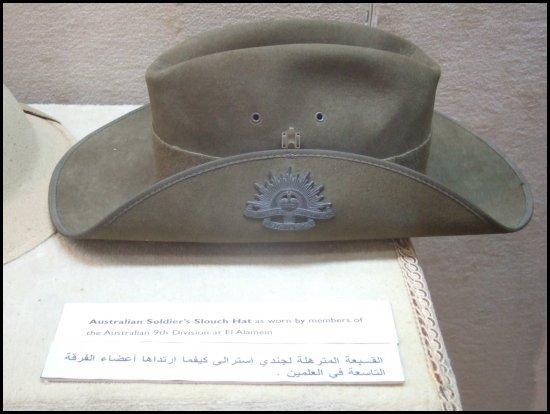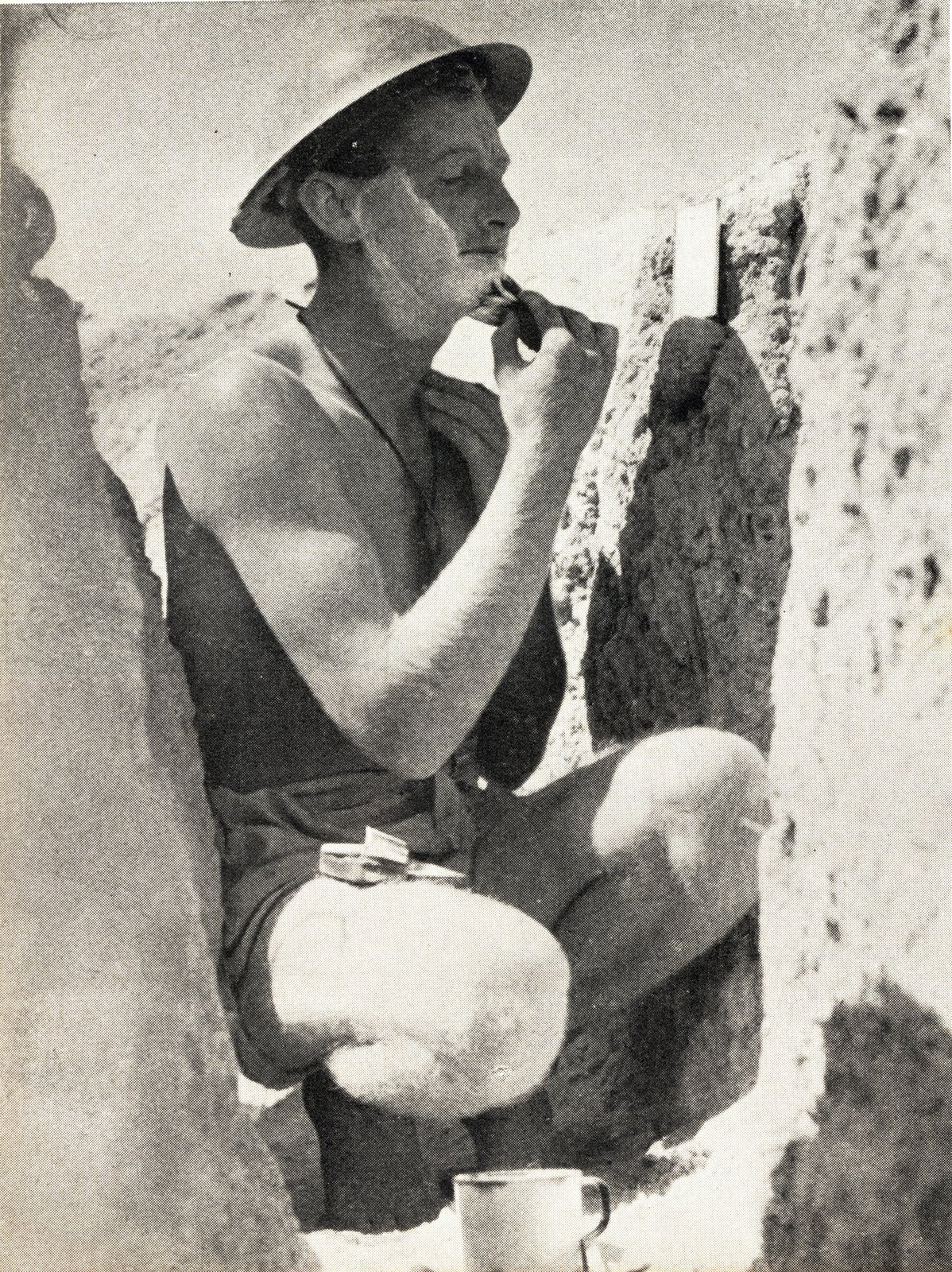Monday, August 18, 2008
[Image] Fleecing the Saffas
[Image] A letter home from Alamein
Sunday, August 17, 2008
[Image] Crocodile Dundee of Tobruk

Thursday, August 7, 2008
[Image] "Monty" and THAT Slouch Hat.

 Here Montgomery is seen wearing the hat at Tel el Eisa after having toured the forward positions for himself. As he inspected his lines he passed through positions held by different forces under his command. At each opportunity Montgomery collected the hat badges of the units and attached them to his slouch hat. A good collection of them can be seen above.
Here Montgomery is seen wearing the hat at Tel el Eisa after having toured the forward positions for himself. As he inspected his lines he passed through positions held by different forces under his command. At each opportunity Montgomery collected the hat badges of the units and attached them to his slouch hat. A good collection of them can be seen above.
Reactions to Montgomery's choice of hat varied. Members of the Royal Australian Artillery stated that he looked like a "prize galah", whilst members of the Infantry saw it as an honour that out of all the different nationalities and units under his command that he chose an Australian Slouch Hat. In spite of all the inherent practicalities of such a hat in the Western Desert it was a real morale boost for members of the 9th Division to see Monty in their hat.
Others however were not convinced as to the suitability of their General wearing this hat and members of the Royal Tank Regiment saw to it that they presented Monty with a black beret in the hope that he would restore order and wear appropriate head dress. Someone must have had a quiet word to the General as he gave up his adored slouch hat and wore the Royal Tank Regiment's beret for the rest of the Western Desert campaign.
 Lieutenant General Bernard Law Montgomery CB, DSO's slouch hat is currently in the collection of the Australian War Memorial at Canberra, Australia.
Lieutenant General Bernard Law Montgomery CB, DSO's slouch hat is currently in the collection of the Australian War Memorial at Canberra, Australia.
images 041980, 044866 and RELAWM30701 Australian War Memorial.
Saturday, August 2, 2008
[Image] Meet the 9th's latest Reo's

[Image] 2/43rd Bren Gunner in Syria
[Image] The faces of the 2/32nd at Alamein
[Image] 2/17th troops try out an Italian flak gun at Alamein
The Italian Breda Model 35 20mm Anti-Aircraft Gun.
Men of 4 Section, D Coy. have a bit of fun on a captured Italian Breda Model 35 20mm cannon. These flak guns were primarily used in an anti-aircraft capacity however they had some use against soft targets like trucks, cars and infantry.
This photo was taken at Alamein in 1942 by my Grandfather, NX17811 Pvt. L.J. McCarthy of the 2/17th Infantry Battalion. This particular gun was popular amongst troops of the 2/17th for posing on for photos to send home. I have seen a photo of Jack Barber, also of the 2/17th and author of "The War, The Whores and the Afrika Korps", trying out the same gun in the photos within his book.
Click on the image for a high resolution copy.
image from the author's personal collection.
Friday, August 1, 2008
[Image] Sgt. Jones' improvised banjo

Friday, July 25, 2008
[Image] 9th Division troops guard Axis prisoners of war at Alamein
 Australian troops of the 9th Division guard Axis prisoners of war at Alamein. Note the fixed bayonets on the Lee-Enfield .303's. The German prisoners appear to be in formal battle dress whilst the Italians are much more casually attired.
Australian troops of the 9th Division guard Axis prisoners of war at Alamein. Note the fixed bayonets on the Lee-Enfield .303's. The German prisoners appear to be in formal battle dress whilst the Italians are much more casually attired.image Imperial War Museum E2478
Thursday, July 24, 2008
[Image] The Alamein Heaven Photo













